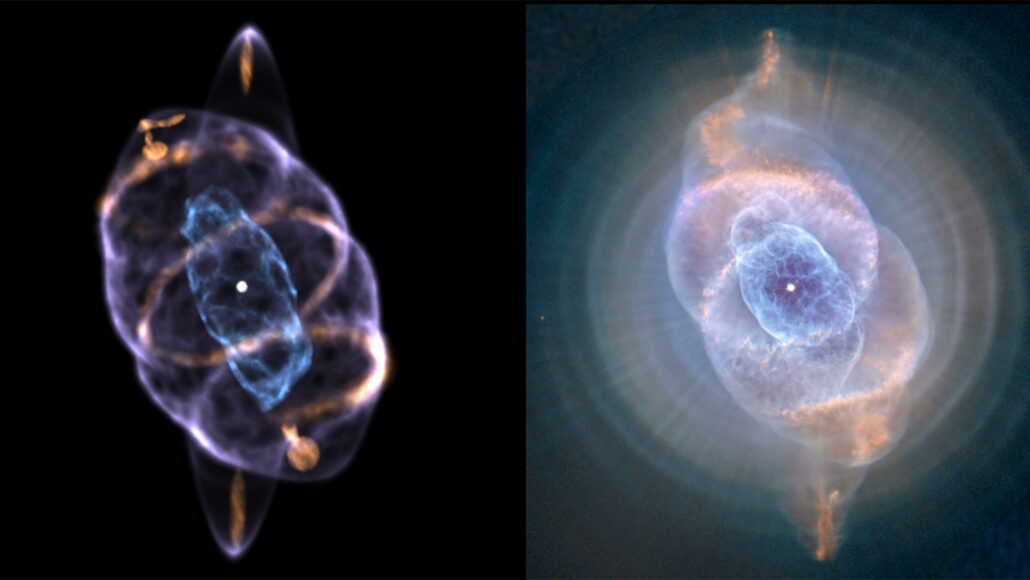3-D: Short for three-dimensional. This term is an adjective for something that has features that can be described in three dimensions — height, width and length.
astrophysicist: A scientist who works in an area of astronomy that deals with understanding the physical nature of stars and other objects in space.
cloud: A plume of molecules or particles, such as water droplets, that move under the action of an outside force, such as wind, radiation or water currents.
computer model: A program that runs on a computer that creates a model, or simulation, of a real-world feature, phenomenon or event.
engineering: The field of research that uses math and science to solve practical problems.
high school: A designation for grades nine through 12 in the U.S. system of compulsory public education. High-school graduates may apply to colleges for further, advanced education.
light-year: The distance light travels in one year, about 9.46 trillion kilometers (almost 6 trillion miles). To get some idea of this length, imagine a rope long enough to wrap around the Earth. It would be a little over 40,000 kilometers (24,900 miles) long. Lay it out straight. Now lay another 236 million more that are the same length, end-to-end, right after the first. The total distance they now span would equal one light-year.
nebula: A cloud of space gas and dust existing between major adult stars. Telescopes can detect these clouds by the light they emit or reflect. Some nebulas also appear to serve as the nurseries in which stars are born.
Society for Science: A nonprofit organization created in 1921 and based in Washington, D.C. Since its founding, the Society has been promoting not only public engagement in scientific research but also the public understanding of science. It created and continues to run three renowned science competitions: the Regeneron Science Talent Search (begun in 1942), the Regeneron International Science and Engineering Fair (initially launched in 1950) and Broadcom MASTERS (created in 2010). The Society also publishes award-winning journalism: in Science News (launched in 1922) and Science News Explores (created in 2003).
software: The mathematical instructions that direct a computer’s hardware, including its processor, to perform certain operations.
star: The basic building block from which galaxies are made. Stars develop when gravity compacts clouds of gas. When they become hot enough, stars will emit light and sometimes other forms of electromagnetic radiation. The sun is our closest star.
symmetry: (adj. symmetrical) In geometry, the property of being indistinguishable from a shifted, rotated or reflected image of the same object. For example, the letter X looks the same whether reflected in a mirror or turned upside down — two different kinds of symmetry.
telescope: Usually a light-collecting instrument that makes distant objects appear nearer through the use of lenses or a combination of curved mirrors and lenses. Some, however, collect radio emissions (energy from a different portion of the electromagnetic spectrum) through a network of antennas.
wake: An area of disturbed air or water left behind an object (such as a boat or animal) moving through it. Or a term for the collective events kicked off by a momentous decision or occurrence.
wavelength: The distance between one peak and the next in a series of waves, or the distance between one trough and the next. It’s also one of the “yardsticks” used to measure radiation. Visible light — which, like all electromagnetic radiation, travels in waves — includes wavelengths between about 380 nanometers (violet) and about 740 nanometers (red). Radiation with wavelengths shorter than visible light includes gamma rays, X-rays and ultraviolet light. Longer-wavelength radiation includes infrared light, microwaves and radio waves.








